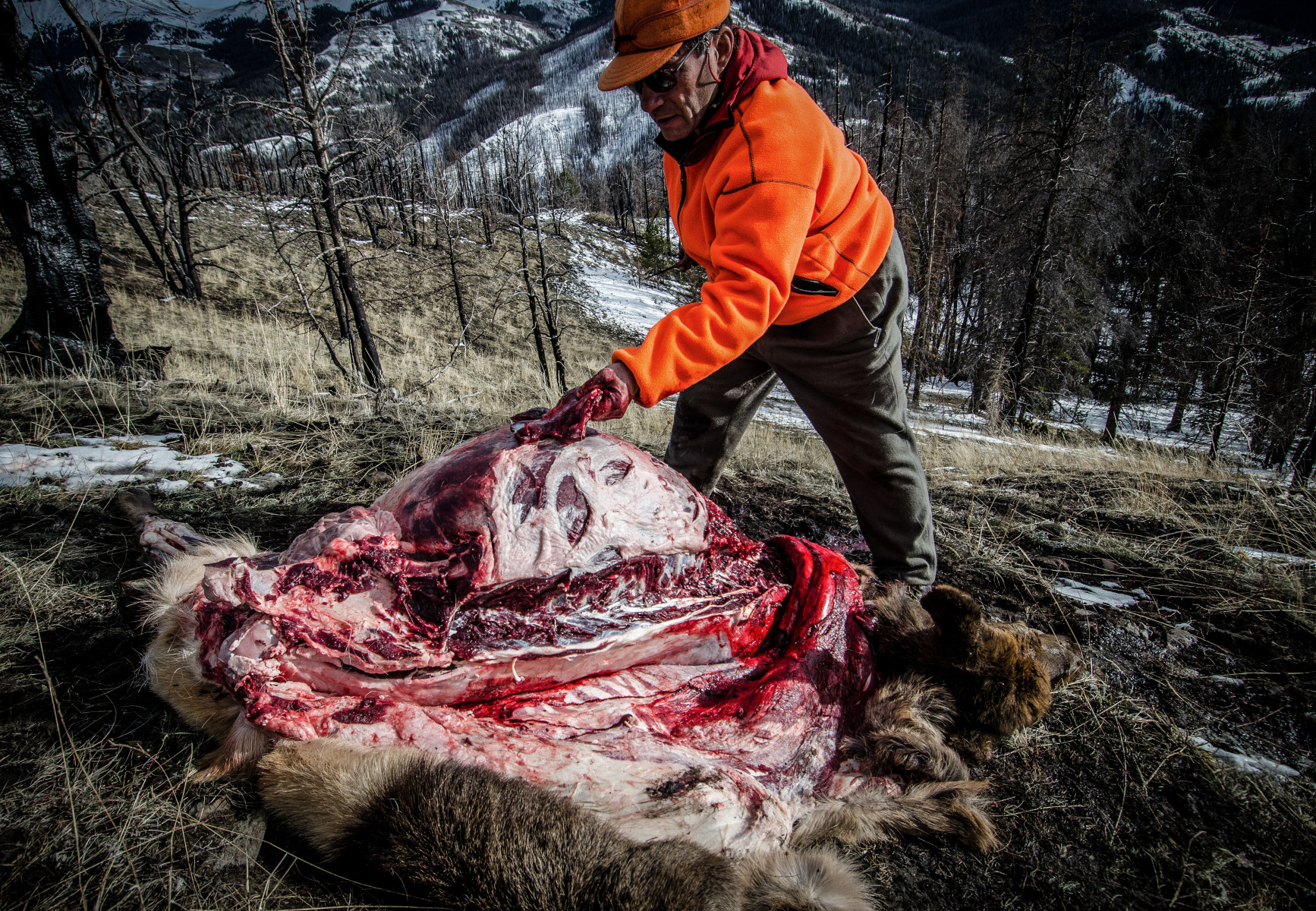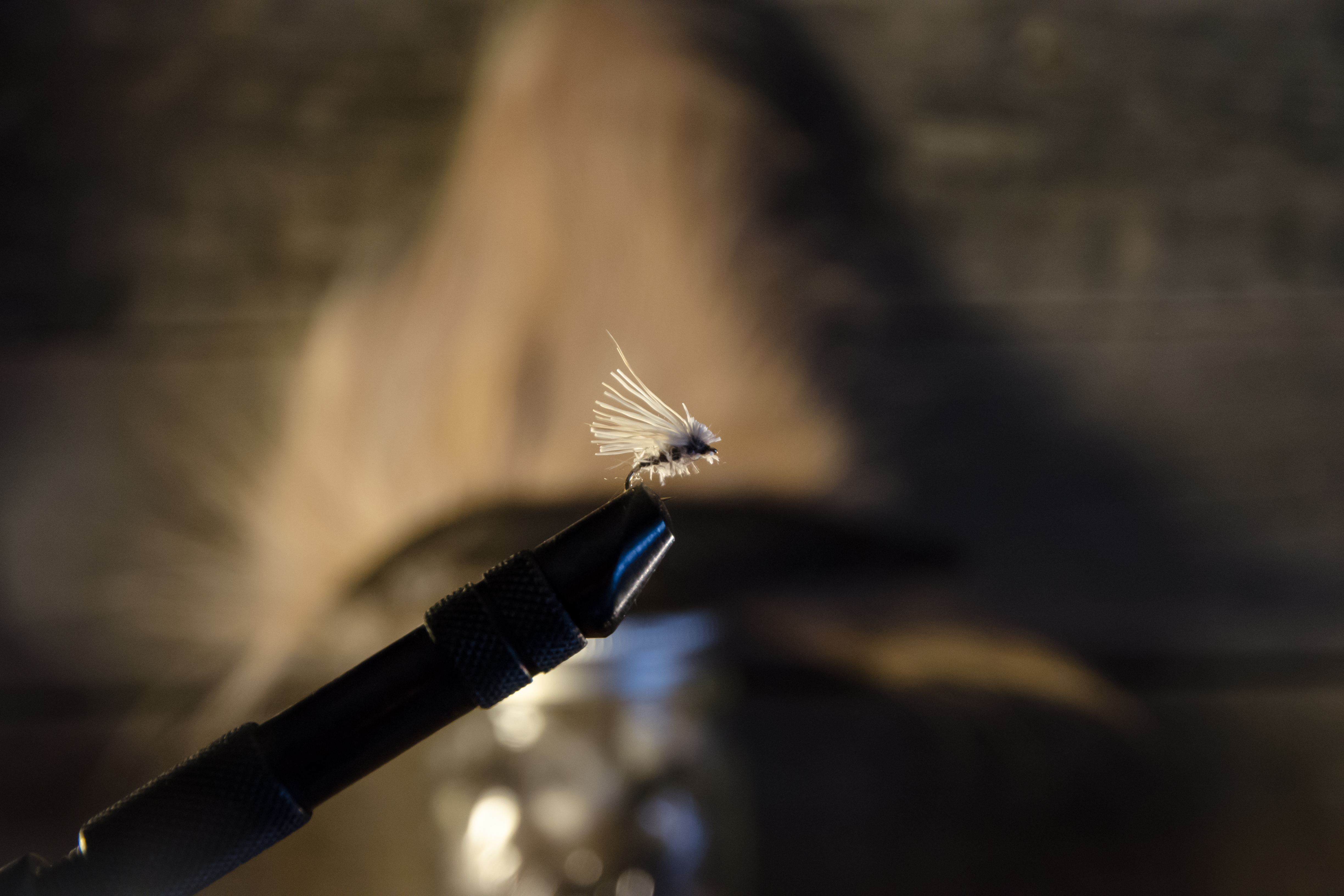Field To Fork To Fly

Years ago I read an account of a contemporary deer hunt in Gray’s Sporting Journal in which the author, after making the kill, swore to the animal that he wouldn’t waste any part of her. “Not one ounce,” he wrote. I don’t remember much else about the story, but that piece has stuck with me. It’s not a novel sentiment, of course, but my sense that he really meant it has fixed it my memory. His sincerity bled through the ink and beyond the page, even though his claim was obviously untrue… and he had to know it.
I make no such pledge when I take an animal. I have enough angst about the inevitable unused bits already. No need to pile on with broken promises too. But that writer’s nobility of intention in the face of the impossible has inspired me to continually try harder, to improve my processing system, and to seek new ways to use materials that would otherwise be tossed with the scrap.
The latest outgrowth of that pursuit is this bastardized version of an elk hair caddis. I call it the Field To Fork To Fly. If you’ve seen any of my previous work at the vise, you already know that it’s ugly, uninformed and amateurish. You can probably also guess that it doesn’t account for too many ounces of elk. But even though it’s little more than a symbolic gesture, there’s a certain satisfaction that comes with carrying a bit of that animal around with me on the water. And it looks pretty enough in a cutthroat’s mouth.
Field to Fork to Fly
 1. Kill an elk. Spend more cold, late night hours than you thought possible meticulously skinning, boning, separating, cleaning, cutting, weighing, labeling and packaging it into meat. Don’t worry, you’ll forget how labor intensive it was before next hunting season.
1. Kill an elk. Spend more cold, late night hours than you thought possible meticulously skinning, boning, separating, cleaning, cutting, weighing, labeling and packaging it into meat. Don’t worry, you’ll forget how labor intensive it was before next hunting season.
2. Cut a handful of 3 x 2 inch rectangles from the hide. Be sure to select a diversity of hair lengths, colors and coarseness’s. The thick white hairs around the rump are particularly buoyant, and nice to have. Cut or scrape away any residual flesh from the inside. Salt this side heavily with a mixture of table salt and Tenderquick, repeatedly massaging the white powder into the skin. Nail the hides, hair-side down, to a board, staking out the corners of each segment, then lean the board vertically against a wall in a cool dry place. It’s a far cry from an adequate tanning or preservation job, but this process serves well enough for fly tying material purposes
3. Wrap the shank of a dry fly hook with brown thread. Dub on a very thin, light-brown or grey body. Add a wrap, bend to eye, of short fibered, grey, brown or black feather. I prefer trimmed duck wing feathers because they’re water repellent, and I get to harvest my own. Finally, affix the stacked elk hair “wing”, near the eye, whip finish and cement.
4. Repeat, mixing and matching elk hair, feather and dubbing colors on assorted hook sizes. They go quick, even for a hack like me.
Now if someone could just figure out how to drop an elk with a trout, we’d have the world’s most perfect cycle.


5. Send a few squares of elk hair to your friends at Fincognito.
Every few years I hook a small trout right as I go into my backcast, sending him flying at a great rate of speed right past my head. If an Elk happened to be walking past at that moment, I’m not sure I could bring him down, but ht might put out an eye.
I’ve experienced the same phenomenon of course, but never recognized the potential applications. Brilliant!
Shoot me an email with your address and they’re on the way!
Matt@stalkingtheseam.com
Just remember Matt those “unused scraps” will go to feed another specie or to replenish the earth. No part is totally wasted. No guilt over broken promises.
Very true Jim. Thanks for reading and for the reminder.